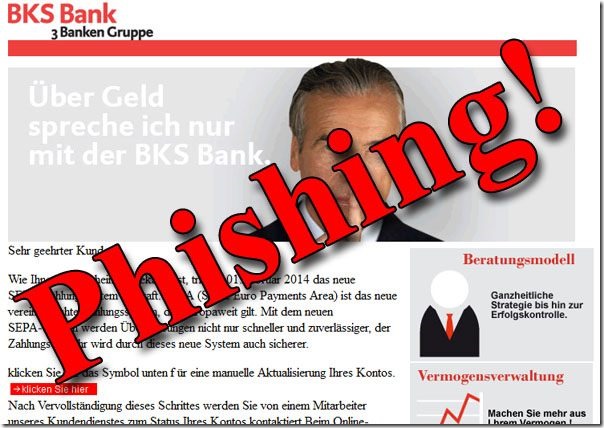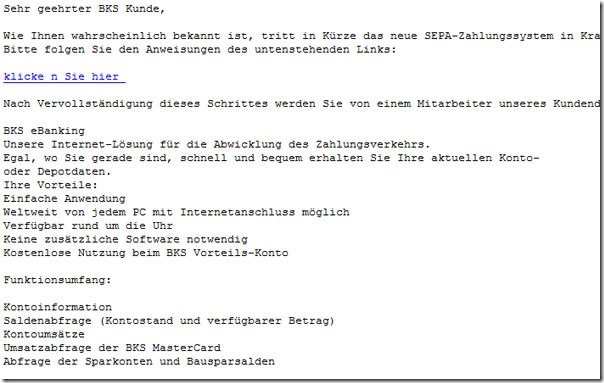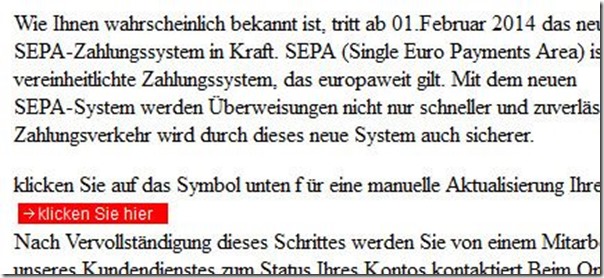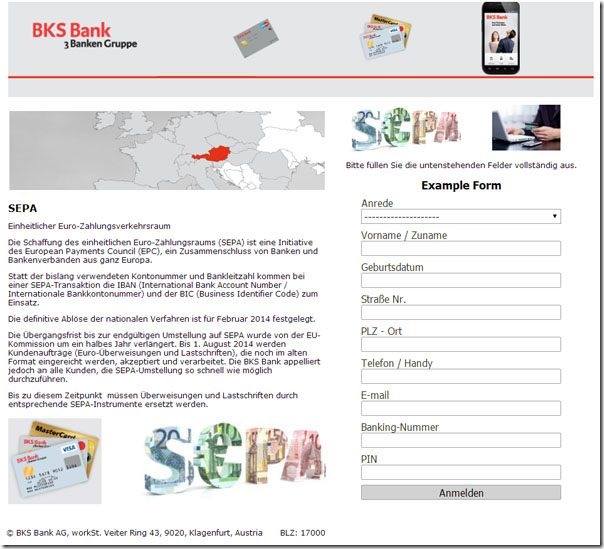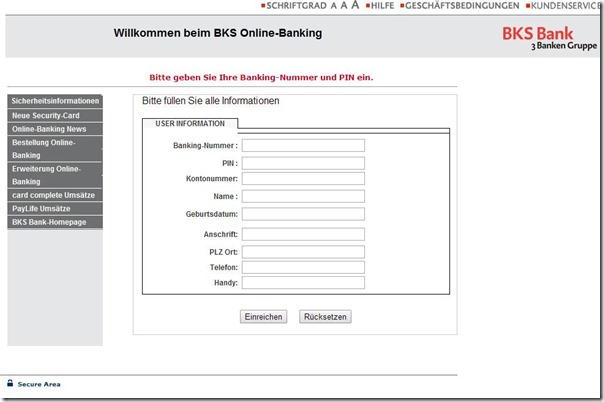One bank – two emails – two qualitatively completely different phishing variants. According to the sender, both come from BKS Bank (Austria).
And precisely because the two emails claim to be from BKS Bank, we will compare them here.
First: the “good guys”. This refers to the variant that comes across as more genuine and is therefore more dangerous.
Cleanly structured, with almost no weaknesses in spelling and grammar: “for “, this email flutters into users’ mailboxes. However, a classic weak point is immediately apparent: the recipient is addressed impersonally.
Dear Customer,
As you probably know, the new SEPA payment system will come into force on February 1, 2014. SEPA (Single Euro Payments Area) is the new unified payment system that applies across Europe. With the new SEPA system, transfers will not only be faster and more reliable, payment transactions will also become more secure thanks to this new system.
The poorly made counterpart comes here without any graphic treats:
This is an email in pure text form, with errors in prominent places. Impersonal salutations and tired presentation basically make the recipient immediately suspicious.
Click me for SEPA
Both emails ask the recipient to follow a link to manually update their account for the SEPA functions. Mail 1 is also a bit fancier here.
Mail two not only offers a simple text link, but also a wonderful typo at this sensitive point.
The phishing form
Both links hide two different phishing forms. Our variant 1 still cleverly comes with the fraudulent input fields.
Everything that is necessary to make an unauthorized transfer is requested by the phishing site.
Variant 2, which hasn't exactly shone so far, is now a little more creative.
Here too, the user should reveal their data.
Phishing and never ending
These two variants, which have now been presented, are currently being sent aggressively and on a large scale (sometimes multiple times to just one mailbox).
Regarding phishing, we can only repeat:
– Banks generally do not send emails asking you to log in.
There is never a link to this login - the SEPA conversion is automatic for private customers.
There are no verifications or manual entries here - always check the address bar on bank forms: is there a secure HTTPS connection?
For further information, please refer to our report on phishing emails - and there's no end to it .
Author: Andre, Mimikama.at
Notes:
1) This content reflects the current state of affairs at the time of publication. The reproduction of individual images, screenshots, embeds or video sequences serves to discuss the topic. 2) Individual contributions were created through the use of machine assistance and were carefully checked by the Mimikama editorial team before publication. ( Reason )


